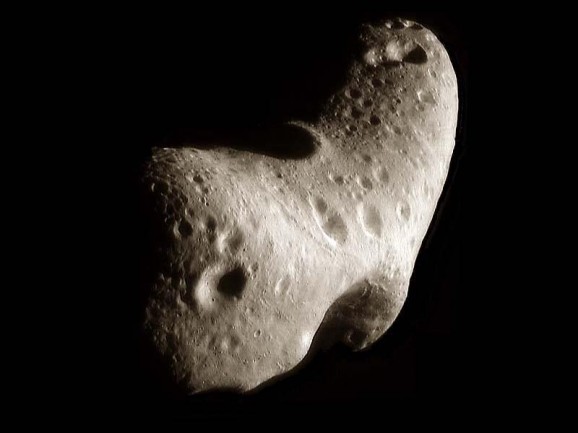NASA’s Asteroid Capture Program Has Haters
This article is more than 2 years old

While capturing one would prove our ability to manipulate the trajectory of a big hunk of space rock, which could be a starting point for asteroid redirection, this mission probably isn’t going to save us from one on a collision course with Earth. ARM involves blowing off a small chunk (just over 30 feet in diameter) from an asteroid and towing that into lunar orbit in a bag. The program is less focused on cataclysm avoidance, which some people take issue with, and more centered on what we can learn, especially stuff that might apply to putting humans on Mars. It’s becoming clear that most experts believe ARM is basically a bad excuse for sucking up resources.
The program has now come under serious fire. At NASA’s Small Bodies Assessment Group a few weeks ago, a professor from MIT argued that it could come at the expense of planetary sciences at NASA, largely because a “one-and-done stunt will irreparably damage small body exploration.” He says that the space agency can learn all it needs to without retrieving an asteroid, and thus embark on a sustainable path of exploration. And the rest of the group members agreed with this assessment.
Furthermore, the group questioned how much harnessing an asteroid would actually help us with manned Mars missions. NASA argues that the environment around the moon isn’t like the low-Earth orbit where the ISS resides, and is more comparable to conditions on the Red Planet, especially when it comes to radiation. Both missions would use Solar Electric Propulsion technologies, as well as similar docking and rendezvous maneuvers. Still, a ride to a nearby asteroid would take a week or two, whereas a ride to Mars takes 7-8 months, and there are enough differences that the Assessment Group doesn’t think spending billions of dollars on ARM will pay off in terms of relevant knowledge. It would be cheaper and easier to test these practices on the Moon.
Popular Science recently ran an article boldly titled “Everyone Hates NASA’s Asteroid Capture Program,” which points out that the National Research Council agrees with the Small Bodies Assessment Group. Still, while NASA sanctions the group, it doesn’t make official recommendations. They only present their findings, so the agency isn’t bound by what they think, nor is it obligated to address their concerns. It’s unclear what NASA will do next with regards to ARM—we’ll all have to stay tuned and perhaps not get our hopes for an asteroid-in-a-bag too high.












